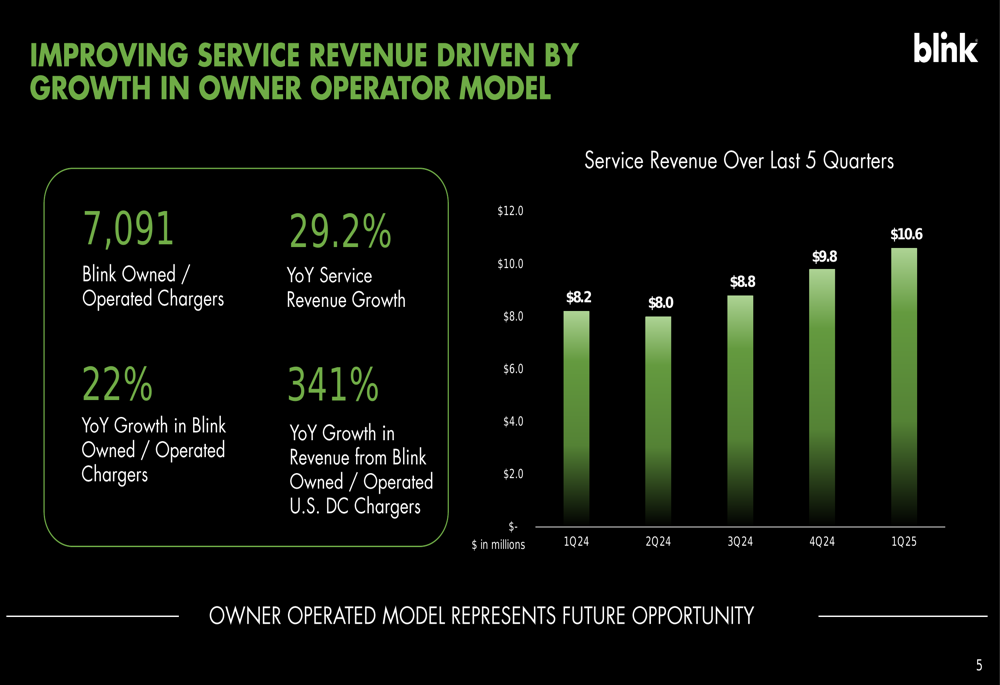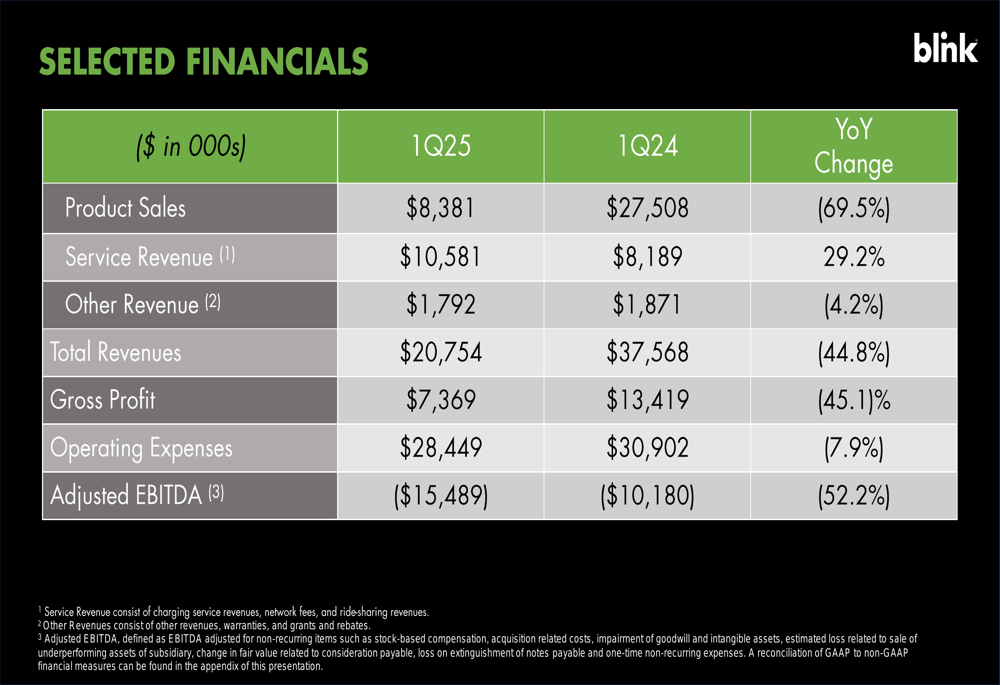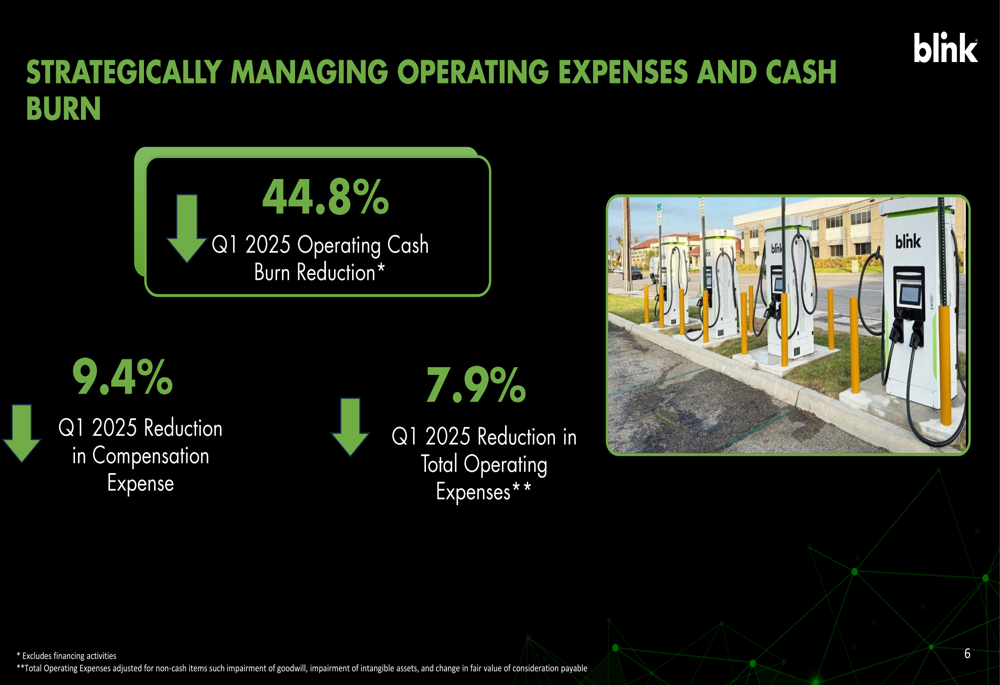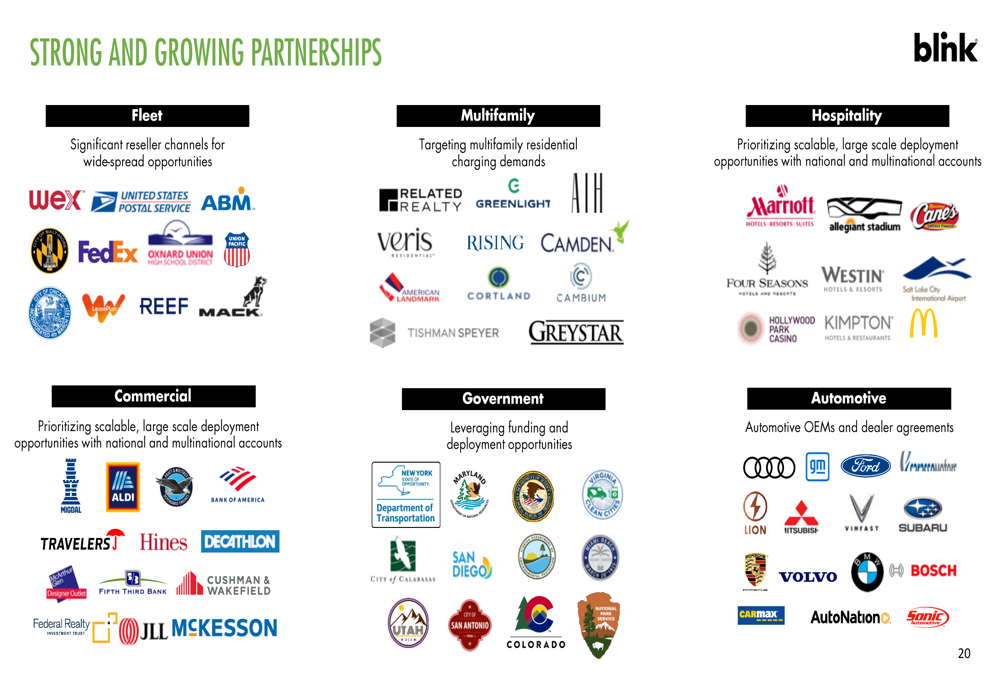Sprouts Farmers Market closes $600 million revolving credit facility
Introduction & Market Context
Blink Charging Co. (NASDAQ:BLNK) presented its first quarter 2025 financial results on May 12, revealing a significant revenue decline despite growth in service-related segments. Following the presentation, Blink’s stock fell 8.04% in after-hours trading to $0.795, continuing its downward trend near 52-week lows.
The EV charging infrastructure company is navigating a challenging market environment while executing a strategic shift toward its owner-operator business model. This transition appears to be creating short-term revenue pressure despite improvements in operational efficiency.
Quarterly Performance Highlights
Blink reported total revenue of $20.8 million for Q1 2025, representing a substantial 44.8% decrease from $37.6 million in Q1 2024. However, the company highlighted several positive growth metrics amid the overall decline.
Service revenues increased 29.2% year-over-year to $10.6 million, while network fees grew 27.2% to $2.6 million. Energy disbursed on Blink networks reached approximately 50 GWh, a significant 66% increase compared to the same period last year.
As shown in the following chart of quarterly service revenue growth:

The company’s owner-operator model continues to expand, with 7,091 Blink owned/operated chargers representing 22% year-over-year growth. Revenue from Blink owned/operated U.S. DC chargers showed particularly impressive growth at 341% year-over-year.
Detailed Financial Analysis
The financial results reveal a company in transition, with product sales declining dramatically while service revenues grow. The comprehensive financial comparison between Q1 2025 and Q1 2024 shows:

Product sales fell 69.5% to $8.4 million from $27.5 million in Q1 2024, driving the overall revenue decline. Despite the revenue decrease, Blink maintained a gross margin of 35.5%, though gross profit decreased 45.1% to $7.4 million.
The company reported a net loss of $20.7 million compared to $17.2 million in Q1 2024, with adjusted EBITDA worsening to ($15.5) million from ($10.2) million. Adjusted EPS declined to $(0.18) from $(0.13) in the prior-year period.
On the positive side, Blink has made significant progress in controlling expenses:

The company reduced operating cash burn by 44.8%, cut compensation expenses by 9.4%, and lowered total operating expenses by 7.9% compared to Q1 2024. These efficiency improvements align with Blink’s stated goal of pursuing profitability.
Strategic Initiatives
Blink’s presentation emphasized several strategic initiatives aimed at long-term growth and profitability. The company highlighted its partnership with Create Energy to develop comprehensive energy storage solutions for EV infrastructure:

This collaboration aims to deliver grid resiliency for EV charging infrastructure with features including peak demand energy management, consistent uptime, and lower total cost of ownership.
The company also outlined its five-point strategy to achieve profitability:

Blink continues to expand its global suite of solutions across hardware, services, and network aspects. Its hardware offerings include various Level 2 and DC fast chargers, while service offerings include Blink Care and EVSTAR Plan for maintenance and protection.
The company’s impressive partner ecosystem spans multiple sectors:

These partnerships across fleet, multifamily, hospitality, commercial, government, and automotive sectors provide Blink with diverse revenue opportunities and market penetration.
Forward-Looking Statements
Looking ahead, Blink’s management emphasized its commitment to "relentlessly pursue profitability" through several key strategies. The company plans to continue growing its DC fast charging portfolio, drive recurring revenue streams, capitalize on market consolidation, and secure non-dilutive financing.
President and CEO Michael Battaglia highlighted the company’s focus on the owner-operator model, which is expected to drive sustained service revenue growth despite the decline in product sales. The emphasis on recurring revenue streams appears to be a central element of Blink’s long-term strategy.
While the overall financial picture shows continued challenges, Blink’s operational improvements and strategic focus suggest the company is taking steps to address its profitability concerns. However, investors appear to remain cautious, as reflected in the stock’s continued downward movement following the earnings presentation.
Full presentation:
This article was generated with the support of AI and reviewed by an editor. For more information see our T&C.
